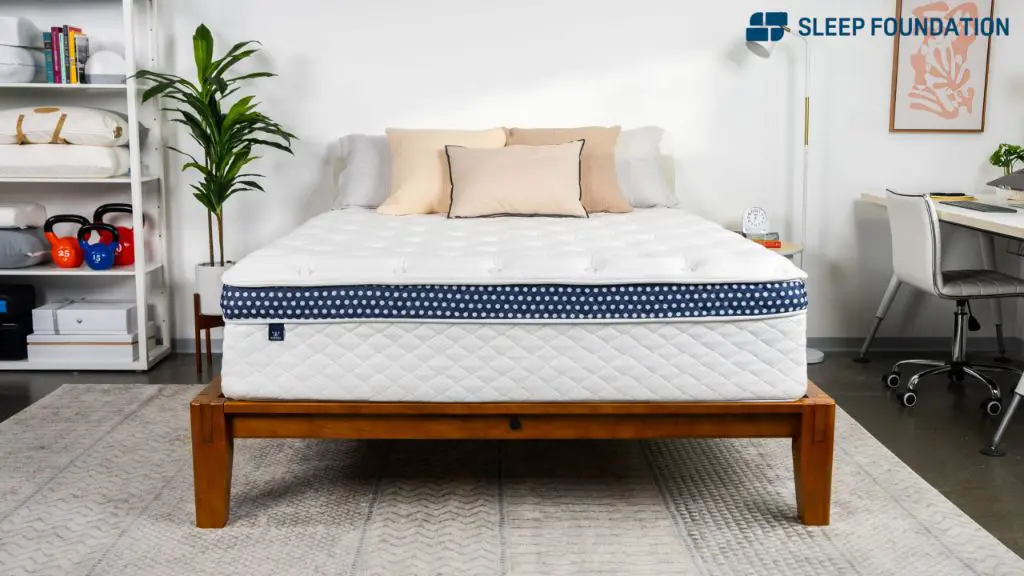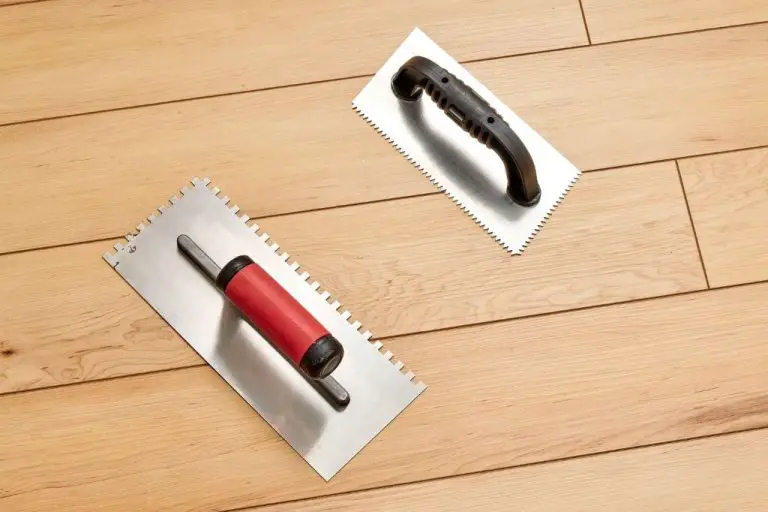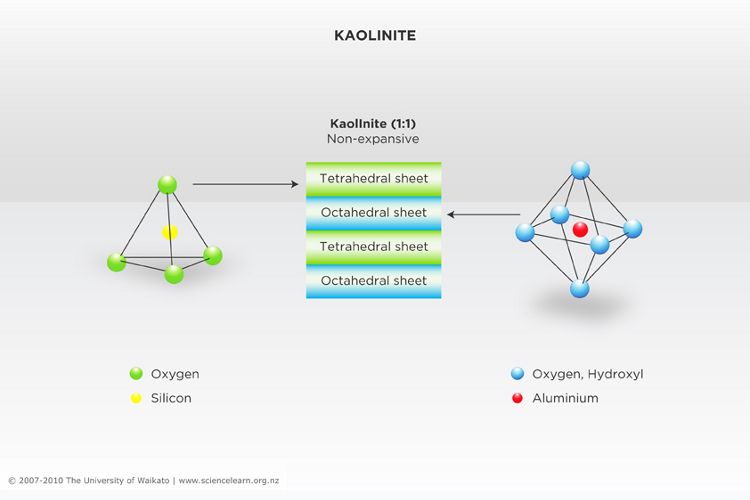Do Mattresses Still Need Box Springs?
The mattress and box spring combination has been the standard bed setup for decades, but recent trends have seen increasing numbers of people choosing to skip the box spring. In this article, we’ll explore the pros and cons of using a box spring and whether mattresses still need one in the modern world.
We’ll start by explaining what a box spring is and providing some historical background. Next, we’ll outline the potential benefits of using a box spring under your mattress. However, we’ll also discuss the downsides and reasons people opt out of having one. Later sections will cover which mattress types can work fine without a box spring, tips for transitioning your setup, and a final verdict on whether box springs are still a necessary part of the modern bed.
What is a Box Spring?
A box spring is a bed base designed to support and provide some cushioning for a mattress (Merriam-Webster). It typically consists of a sturdy wooden frame that contains springs and is covered in cloth fabric. The main purpose of a box spring is to elevate a mattress and absorb some of the impact from your body weight to ensure proper support and mattress longevity (Wikipedia). It sits directly on a bed frame or platform and the mattress sits on top. The springs inside a box spring distribute the weight and pressure, providing underlying flexibility and bounce to compliment the mattress.
By elevating the mattress off the ground, a box spring also allows for under-bed storage. The structure gives height that enables access to the space underneath. So in addition to supporting the mattress, box springs offer a secondary benefit of added storage capacity (BHG).
Pros of Using a Box Spring
One of the main benefits of using a box spring is that it provides support and structure for the mattress. Box springs are designed with a rigid wood or metal frame and springs or slats inside to help absorb weight and impact. This helps prevent sagging and indentation in the mattress, especially in areas where people sit or sleep the most. The structure of a box spring helps the mattress maintain its shape andintegrity for a longer period of time. According to Sleep Foundation, box springs provide “a shock-absorbing, semi-rigid surface that uniformly distributes body weight.”
Box springs also lift mattresses higher off the ground, which makes getting in and out of bed easier, especially for seniors or those with mobility issues. Many box springs add between 5-8 inches of height. Having the mattress at a higher level can also make it easier to make the bed and tuck in sheets.
The combination of support, structure, and lift that box springs provide can help extend the usable life of a mattress. According to research from the Better Sleep Council, using a box spring as the foundation beneath a mattress “can double its life expectancy.” With proper care and rotation, a mattress on a box spring may maintain its original comfort and support for significantly longer before needing to be replaced.
Cons of Using a Box Spring
While box springs have some benefits, there are also some downsides to consider:
Added cost – Box springs can significantly increase the overall cost of a mattress setup. The box spring adds an additional expense on top of the mattress price (source).
Takes up space – Box springs require extra height, which can be an issue in spaces with low ceilings. The bulky frame takes up precious space in small bedrooms or apartments (source).
Not eco-friendly – Most box springs are made from wood, metal, and fabrics which are not easily recycled. So box springs ending up in landfills creates unnecessary waste (source).
Given these drawbacks, many people are opting out of box springs and choosing lower profile foundations or slatted bed frames instead.
When a Box Spring is Necessary
A box spring is still required or recommended in some cases. This type of foundation provides added support that certain mattresses and bed frames need in order to perform properly and last longer.
With innerspring mattresses, the coils in the mattress work with the springs in the box spring to provide shock absorption and bounce. Using an innerspring mattress on a solid surface can cause uneven wear, sagging, and loss of comfort over time. According to Sleep Foundation, box springs help preserve the mattress shape and prevent premature materials breakdown in spring and hybrid mattresses. [1]
For certain bed frames, like more basic metal frames, a box spring can help prevent sagging and increase mattress life. Foundations with internal structural support and reinforcement do a better job cradling the mattress. U.S. News says slat spacing over 3 inches on metal platforms often requires the use of a box spring or bunkie board. [2]
Alternatives to Box Springs

There are several alternatives to traditional box springs that can provide adequate support for a mattress. Three popular options include platform beds, adjustable bases, and slatted foundations.
Platform beds feature a solid, flat surface made of wood or metal slats. The platform provides support across the entire mattress without the need for a box spring. Platform beds come in many styles, like basic metal frames or wooden beds with built-in storage. The key is ensuring the platform offers enough points of contact and doesn’t flex too much under pressure.
Adjustable bases allow you to raise the head and foot of the bed for customized comfort and support. They can be paired with an existing headboard and frame or used as a stand-alone base. Adjustable bases are often made with a metal frame and slats or a solid wood platform to support the mattress. Models with massage, USB ports, and other features are also available.
Slatted foundations are composed of wooden slats spaced 2-3 inches apart on a frame. Higher quality slat beds will have more slats with smaller gaps between them for better reinforcement. Some slatted foundations allow you to adjust the slat angle and flexibility as well. Like platform beds, slatted foundations require a mattress that works well without a box spring.
When choosing an alternative, make sure it suits the needs of your mattress. Firmer, heavier mattresses usually pair best with a rigid platform bed while softer mattresses may benefit from more flexibility from slatted foundations.
Mattress Types That Don’t Require Box Springs
Certain types of mattresses are designed to provide support and structure without the need for a box spring. This includes popular mattress materials like memory foam, latex, and hybrid models.
Memory foam mattresses contour to the shape of your body and provide pressure relief. The foam is dense enough to support sleepers without a box spring. Many memory foam beds come with a solid or slatted base that serves as a sufficient foundation.
Latex mattresses are naturally responsive and push back against your body weight to keep the spine aligned. Natural latex and synthetic latex foam provide structure so the mattress doesn’t need the added support of a box spring. Platform beds or slatted frames allow airflow under the latex mattress.
Hybrid mattresses contain coils or springs combined with foam comfort layers. The coil system gives the mattress bounce and support. Since the coils provide a reinforced base, hybrid mattresses don’t require a box spring. Using a box spring with a hybrid mattress may cause sagging.
Tips for Going Without a Box Spring
If you decide to forego a box spring, there are some tips to ensure your mattress still gets the support it needs:
Use a suitable base – Platform beds, slatted frames, and adjustable bases can provide adequate support for a mattress without a box spring. Be sure the base is designed for the mattress type. For example, memory foam mattresses need a solid, rigid base (New Alternatives to the Classic Box Spring).
Add a mattress topper – Adding a thick mattress topper between the mattress and base can help make up for some of the missing cushioning from a box spring. Look for a 2-3 inch memory foam or latex topper (How to Get Support For Your Mattress Without a Box Spring).
Rotate mattress – Without a box spring, it’s even more important to rotate your mattress regularly to prevent uneven wear. Rotate head-to-foot every few months.
The Bottom Line
In summary, while box springs were once considered a necessary foundation for mattresses, this is no longer the case with many modern mattress types like memory foam, latex, and hybrid models. Box springs can provide extra height, absorb shock, and extend mattress life, but for most mattresses today, a box spring is optional.
Certain mattress types like innerspring may still require a box spring for proper support and warranty coverage. But alternatives like platforms, adjustable bases, and bunkie boards can work for most mattresses, providing adequate support at a lower cost. Just make sure any foundation alternative matches the mattress’s height and weight capacity.
The bottom line is that box springs are no longer an absolute requirement thanks to improvements in mattress materials and construction. Consider your mattress type, personal preferences for height and feel, and budget to decide if you can comfortably skip the box spring.
Sources
This article was researched using the following sources:
-
The Sleep Foundation. “Do You Need a Box Spring?” Accessed August 30, 2021. https://www.sleepfoundation.org/best-mattress/do-you-need-box-spring
-
Saatva. “Do You Really Need a Box Spring? The Pros and Cons.” Accessed August 30, 2021. https://www.saatva.com/blog/box-spring-guide/
-
Mattress Firm. “Do You Really Need a Box Spring?” Accessed August 30, 2021. https://www.mattressfirm.com/sleep-resources/do-you-really-need-a-box-spring
-
Crane & Canopy. “Do You Really Need a Box Spring?” Accessed August 30, 2021. https://www.craneandcanopy.com/blog/box-springs-necessary/
-
Real Simple. “Do You Really Need a Box Spring?” Accessed August 30, 2021. https://www.realsimple.com/home-organizing/decorating/bed-bath/box-spring-necessary
This article synthesizes research and recommendations from experts and reputable sources to provide readers with a comprehensive overview on whether mattresses still need box springs.






